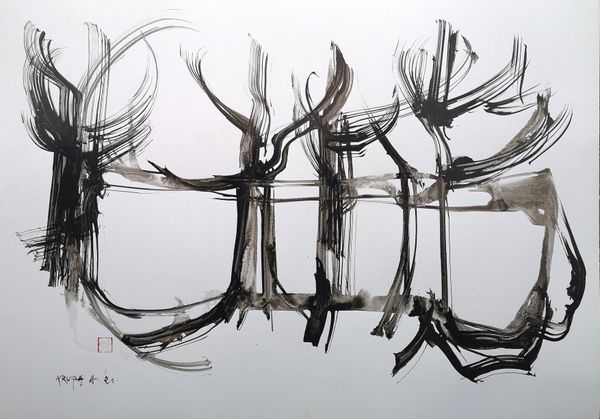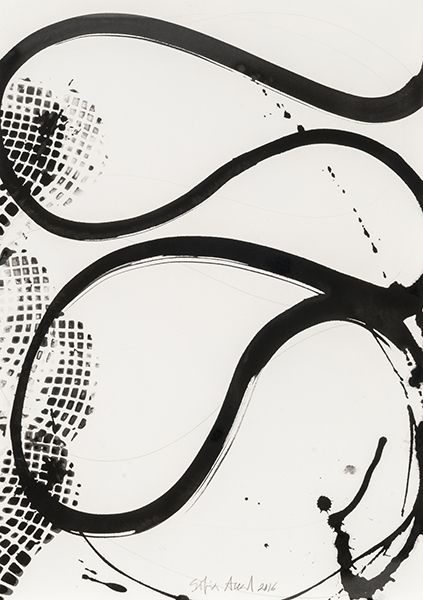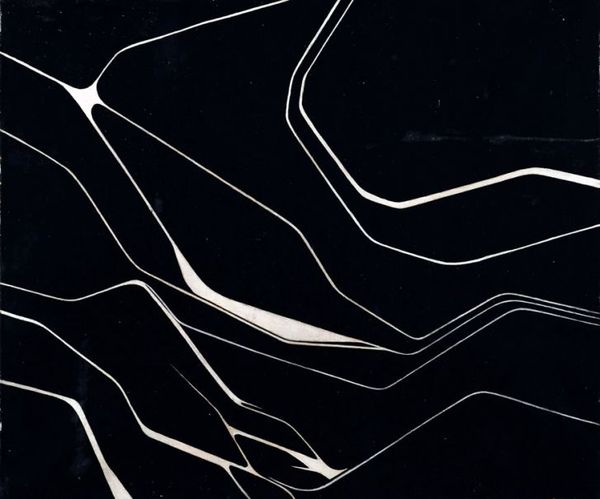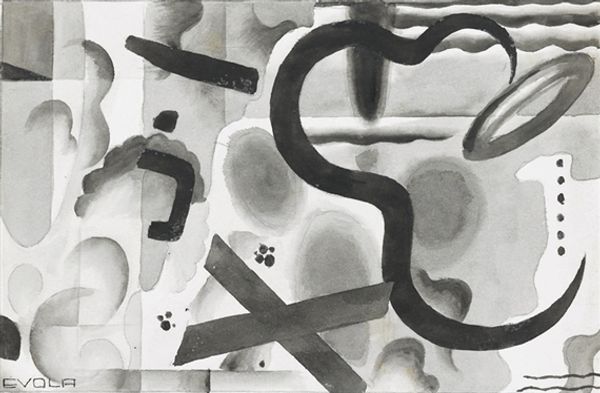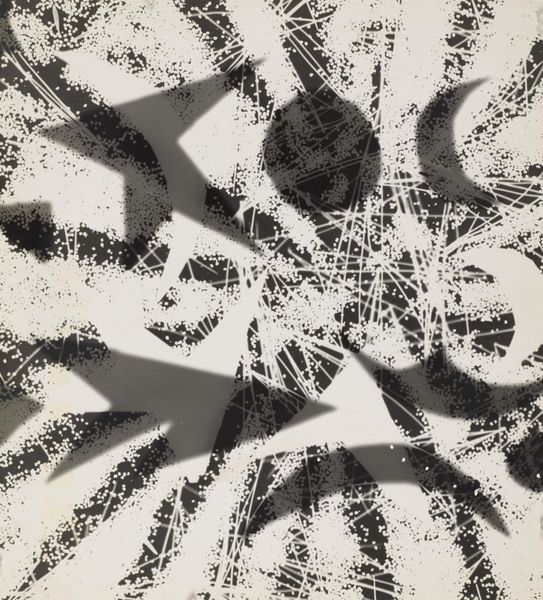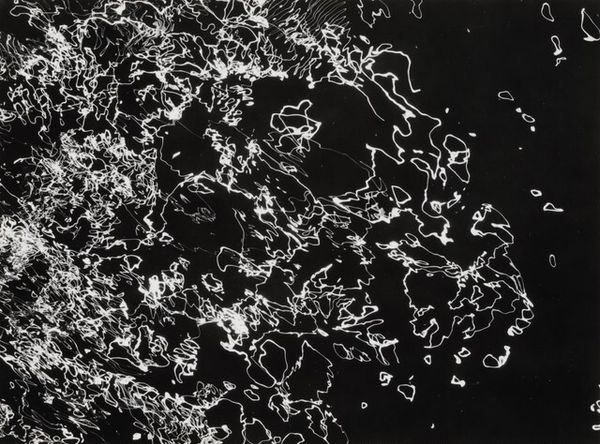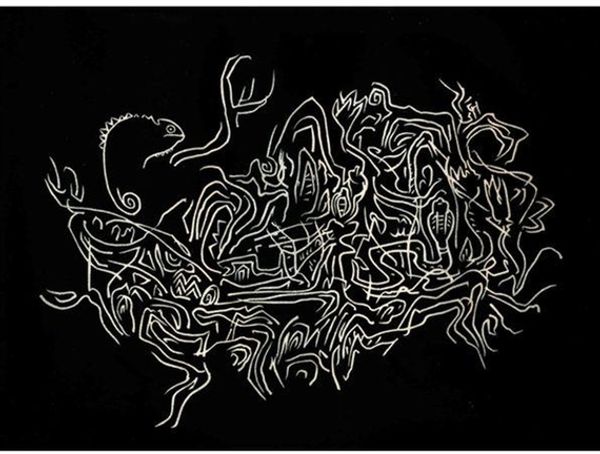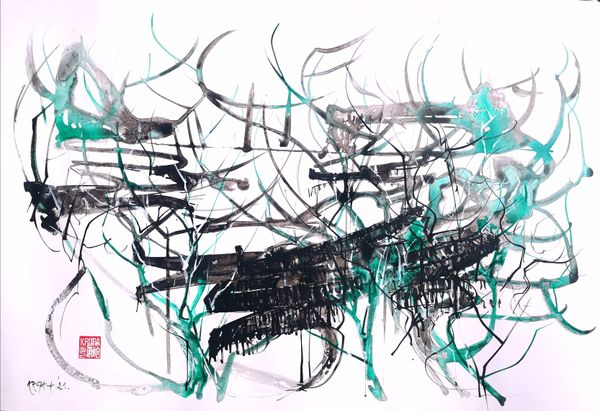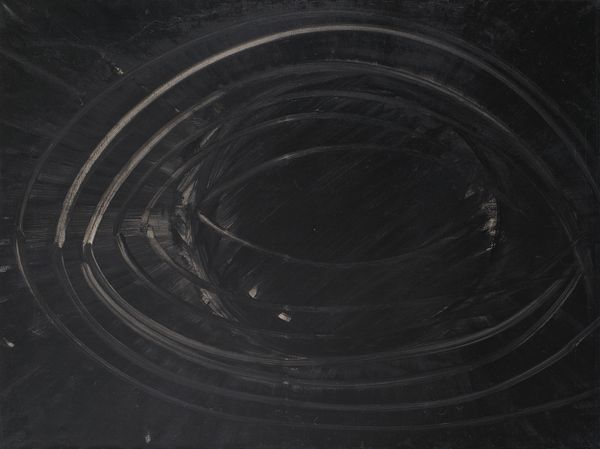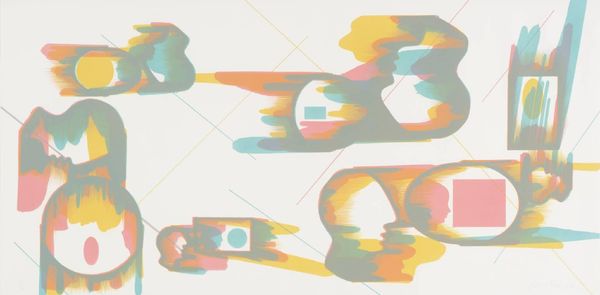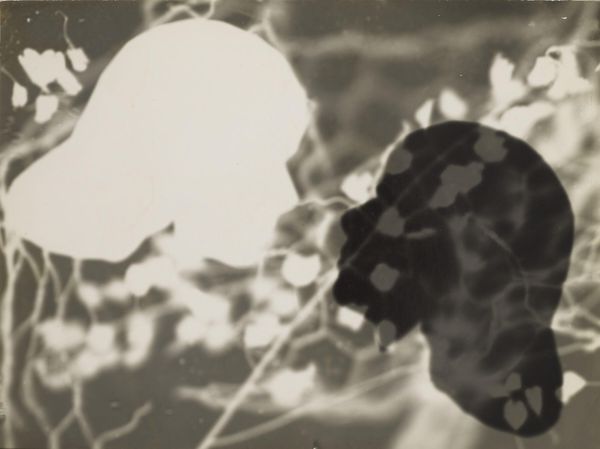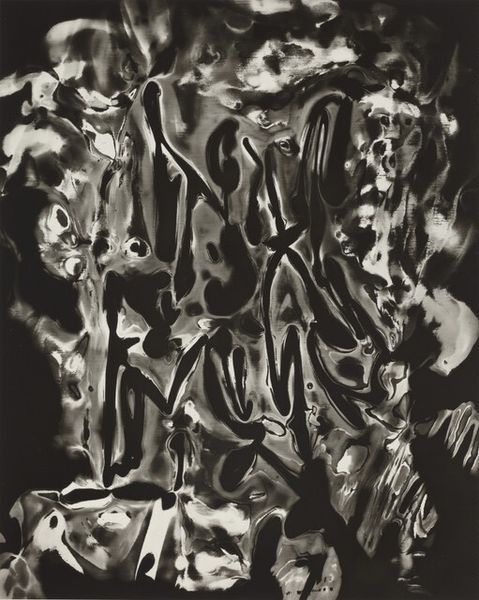
photogram, photography
#
abstract-expressionism
#
photogram
#
sculpture
#
photography
#
geometric
#
black colour
#
line
Dimensions: overall (image): 8.5 x 11.3 cm (3 3/8 x 4 7/16 in.) mount: 9.6 x 12.3 cm (3 3/4 x 4 13/16 in.)
Copyright: National Gallery of Art: CC0 1.0
Editor: Harry Callahan's "Camera Movement on Flashlight," made around 1946-47, is a mesmerizing dance of light captured through photogram techniques. It almost looks like ethereal calligraphy against a stark, black backdrop. What do you make of this striking piece? Curator: Oh, I adore this! It reminds me of trying to catch dreams. Callahan, bless his experimental heart, wasn't just snapping pictures; he was painting with light. This piece, to me, embodies a sense of fleeting, transient beauty. Like fireworks or shooting stars – things we can't quite grasp. He took such an ordinary object, a flashlight, and turned it into pure visual poetry. Editor: Visual poetry, that's a great way to describe it. I'm curious about the photogram technique itself. How does that contribute to the feel of the work? Curator: It's key! No camera involved, just light, chemistry, and Callahan's unique touch. He's orchestrating these luminous streaks, directly manipulating the light on the photographic paper. He's freed himself from the constraints of representation, giving us something much more primal and expressive. Doesn't it make you wonder what else we might reveal if we just let go of the "right" way to do things? Editor: Definitely makes you think. It seems like Callahan was ahead of his time in embracing abstraction through photography. Curator: Absolutely. It is important to note that he found beauty in everyday things, while also pioneering a whole new visual language. The result is, quite literally, brilliant. What is your takeaway from all this? Editor: I'm left with an appreciation for the unexpected beauty hidden within the simplest of things, and for the artists who dare to find new ways of seeing. Thanks!
Comments
No comments
Be the first to comment and join the conversation on the ultimate creative platform.
